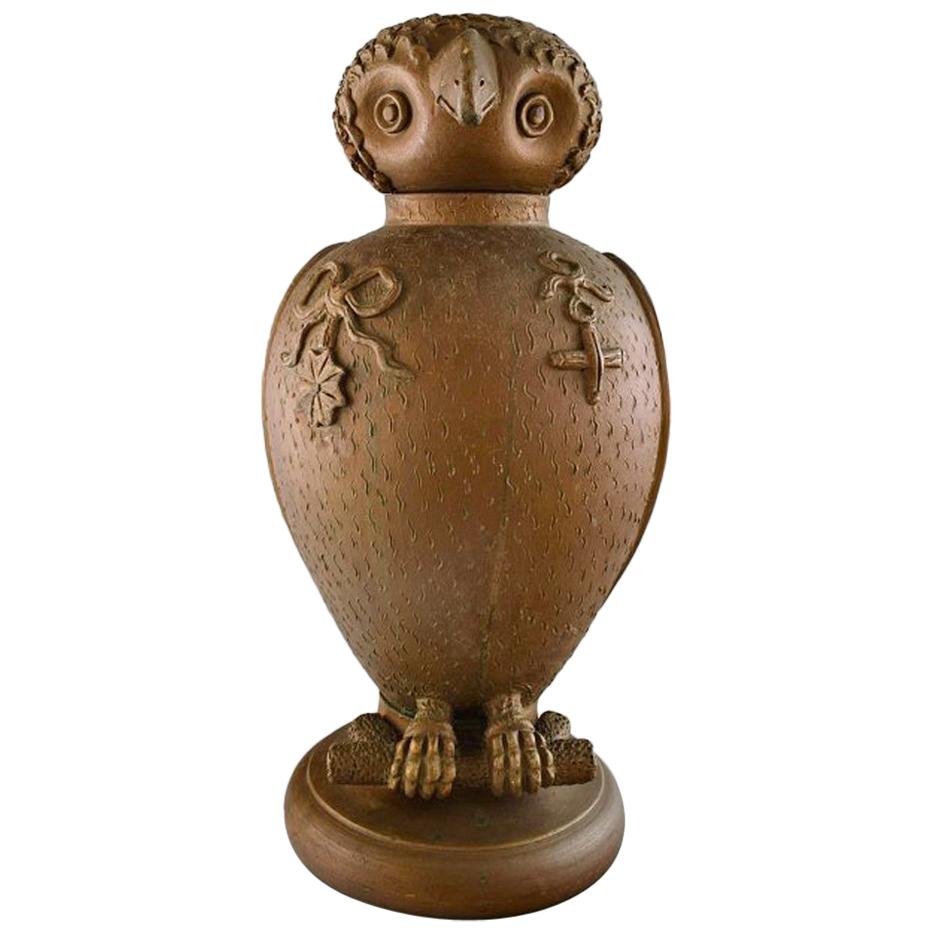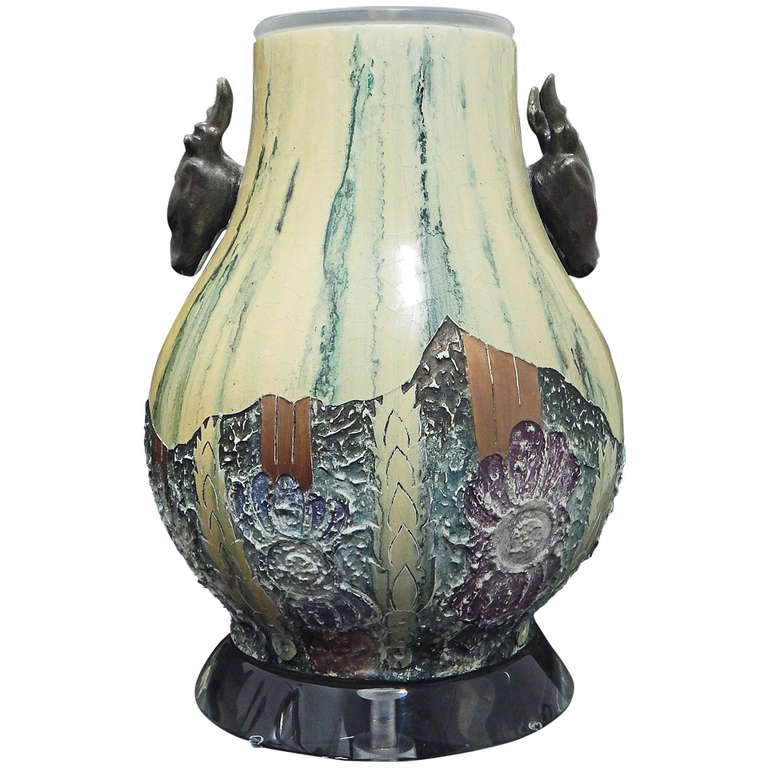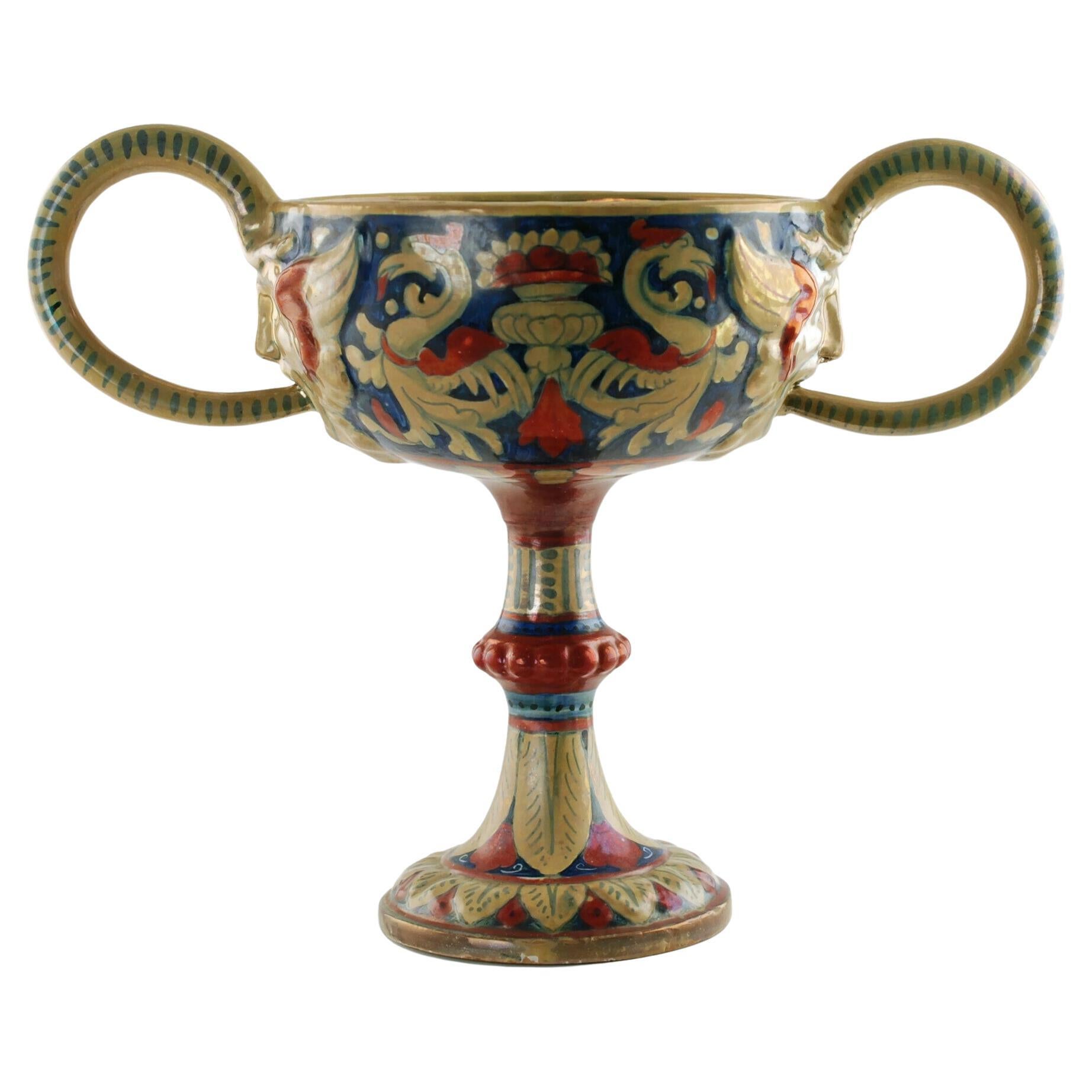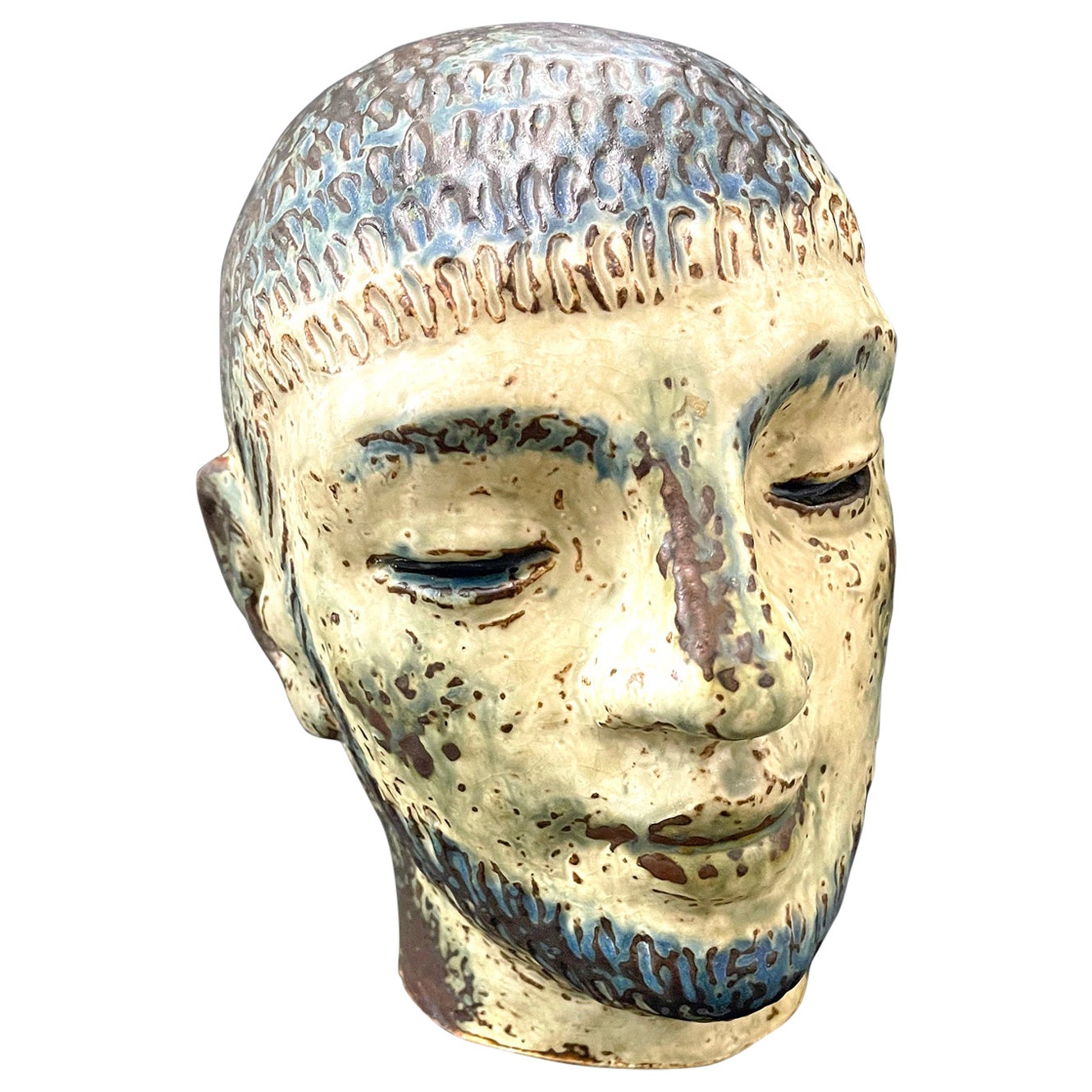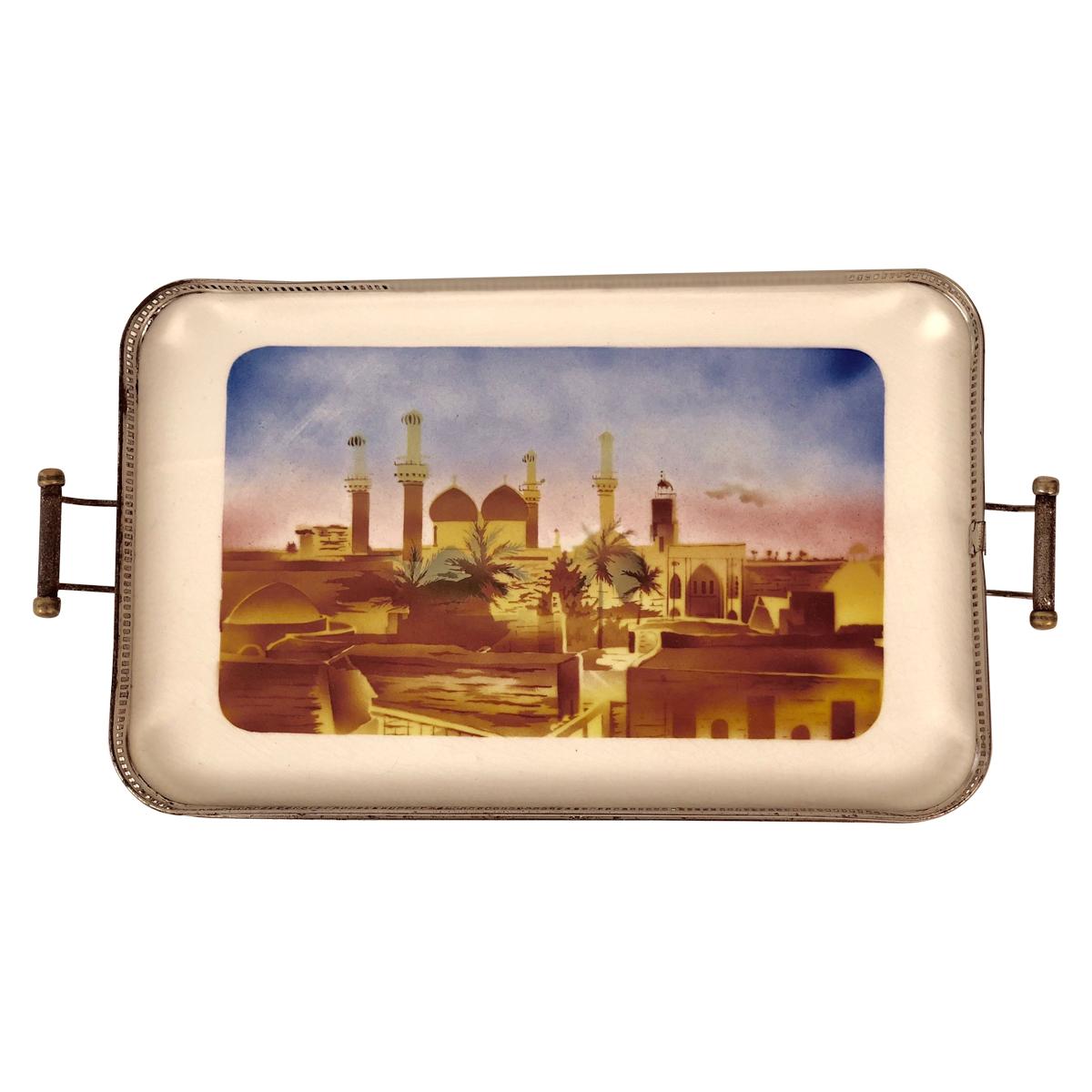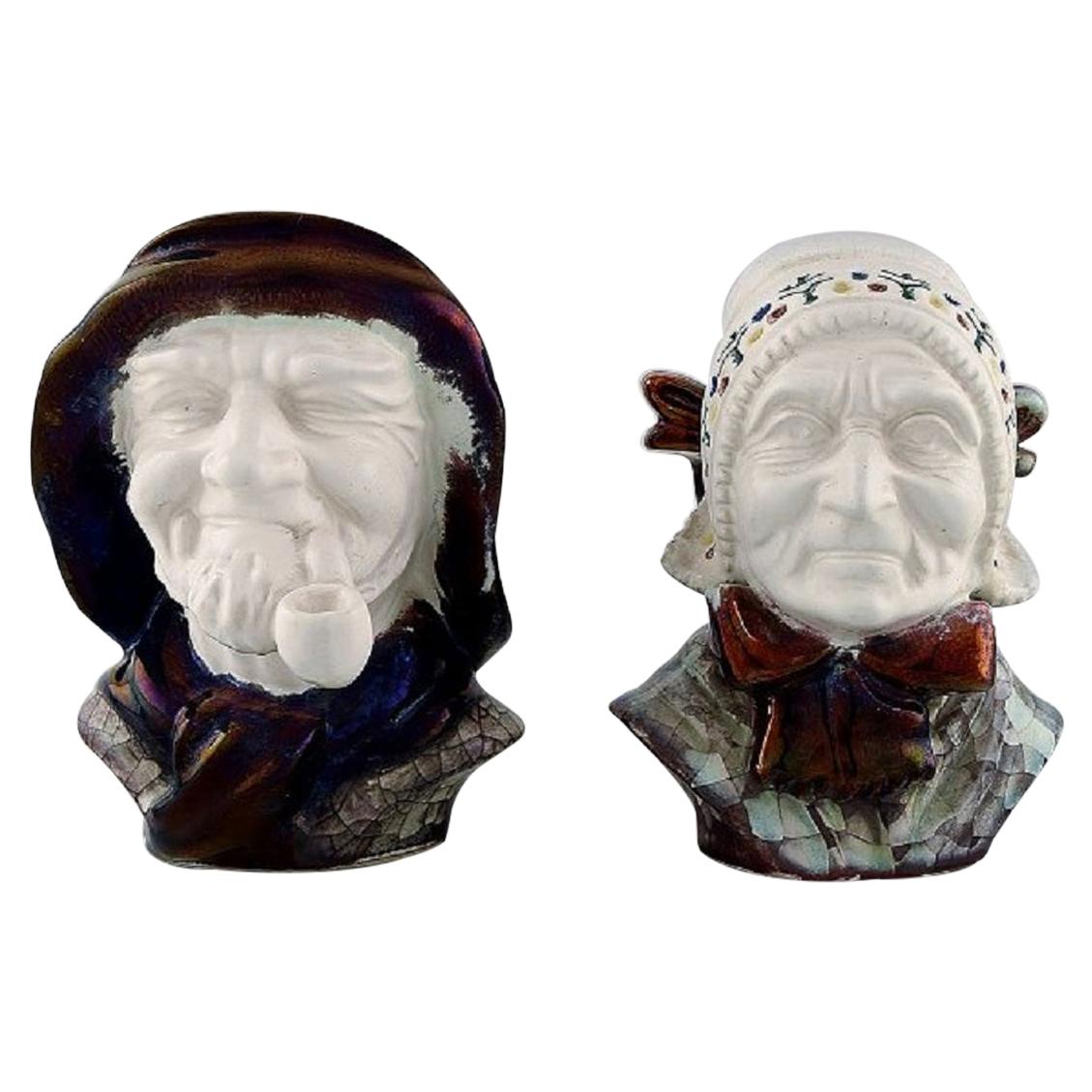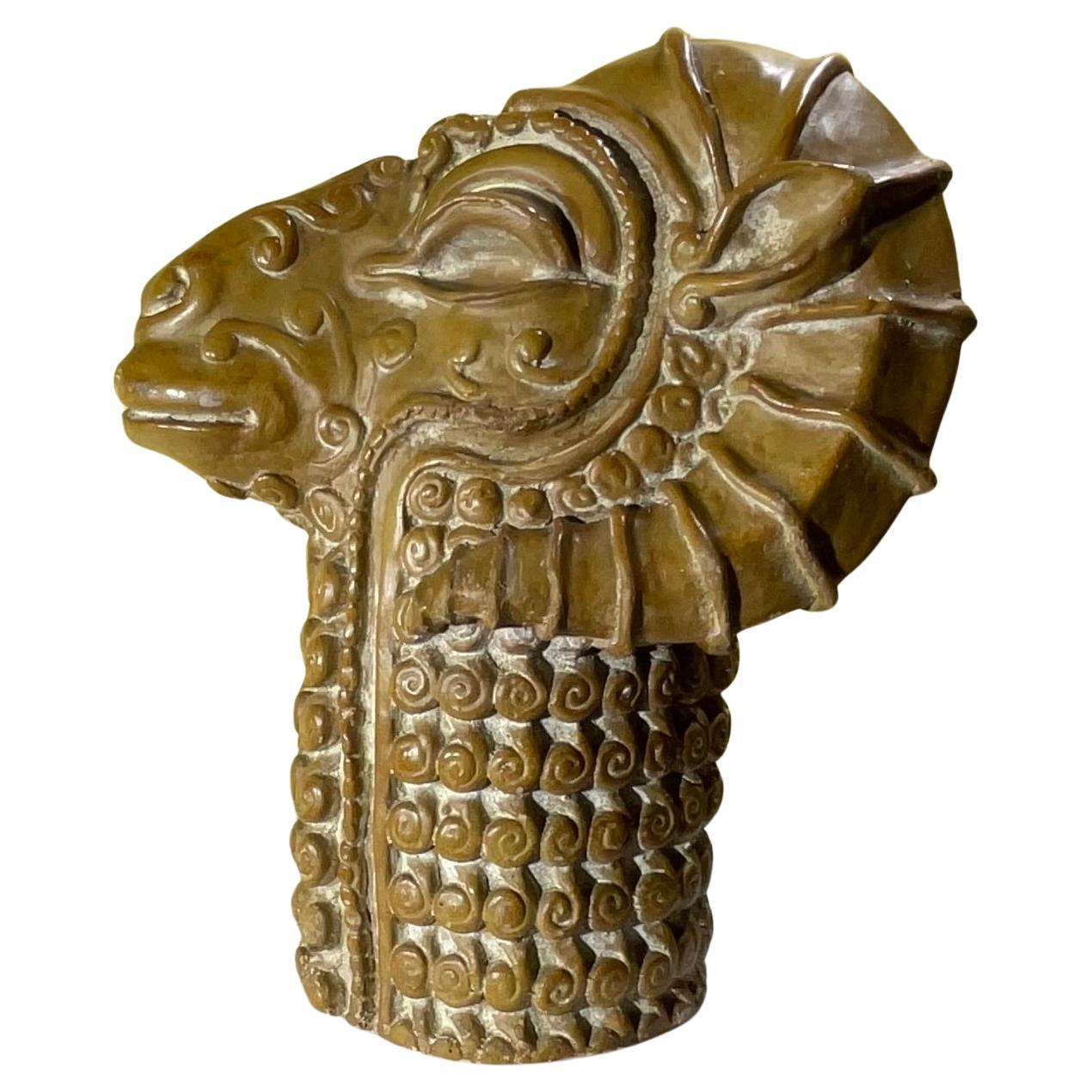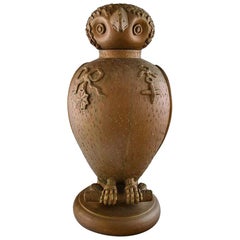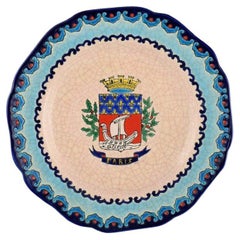
Bicephalous Kantharus with the Head of a Maenad and a Silene
View Similar Items
1 of 4
Bicephalous Kantharus with the Head of a Maenad and a Silene
About the Item
- Dimensions:Height: 5.91 in (15 cm)Width: 5.32 in (13.5 cm)Depth: 4.26 in (10.8 cm)
- Materials and Techniques:
- Place of Origin:
- Period:
- Date of Manufacture:Beginning of the 5th Century BCE
- Condition:Wear consistent with age and use. Restoration was performed on one of the handles. There are small fragments of black varnish.
- Seller Location:Paris, FR
- Reference Number:1stDibs: LU3661111916943
You May Also Like
- Vintage Staffordshire Cheese Dish in the Shape of a Cow's HeadLocated in Centennial, COA charming English glazed majolica porcelain Staffordshire covered cheese dish in the shape of a cow's head. The dish is triangular, accommodating a cheese wedge, with rounded corner...Category
Mid-20th Century British Country Ceramics
MaterialsCeramic
- Large Danish Skotterup Owl with Removable Head of Glazed EarthenwareLocated in Copenhagen, DKLarge Danish Skotterup owl with removable head of glazed earthenware. With incised pattern, Early 1900s. In very good condition. Measures: 52 x 27 cm. Produced by the stoneware f...Category
Early 20th Century Danish Folk Art Ceramics
$1,440 Sale Price20% Off - Longwy, France, Art Deco Plate with the Parisian Coat of Arms and FoliageLocated in Copenhagen, DKLongwy, France. Art Deco plate in glazed stoneware with the hand-painted Parisian coat of arms and foliage. 1920s / 30s. Diameter: 23.5 cm. In excellent condition. Stamped. Ema...Category
Vintage 1920s French Art Deco Ceramics
MaterialsStoneware
- Pair of Blue and White Plaques with Ships off the Coast, 1784-1800By DelftLocated in ROSSUM, GEPair of blue and white plaques with ships off the coast. Makkum, 1784-1800 Kingma pottery painter: Adam Sijbel The diamond-shaped plaques have a raise...Category
Antique Late 18th Century Dutch Baroque Delft and Faience
MaterialsCeramic, Faience
- Extraordinary Table Lamp with Scagliola, Deer's Head Mounts, Lucite BaseLocated in Philadelphia, PAQuite extraordinary, this Italian table lamp features Lucite foot and cap, a superb scagliola finish and two deer's head mounts. Furthermore, the artist has "peeled away" the scagli...Category
Vintage 1940s Italian Mid-Century Modern Table Lamps
MaterialsCeramic
- Rubboli Lustre Majolica Double-Handled Compote with Mask Head DetailBy RubboliLocated in Cincinnati, OHThis early 20th century piece of Italian lustreware was made by the renowned Rubboli family pottery in the Umbrian town of Gualdo Tadino, Italy. Italian lustreware Majolica production traces its origins to the Renaissance. The art was revived in Gualdo Tadino during the last quarter of the 19th century, largely due to the efforts of ceramist Paolo Rubboli. Rubboli established his pottery in the region around 1870, and became known for the high quality of his distinctive cobalt, red and gold Neo-Renaissance lustreware. Rubboli's wife Daria and sons Lorenzo and Alberto continued Paolo's efforts after his death in 1890, and joined the newly formed consortium Societa Ceramica Umbria in 1920. Rubboli pieces dating to the period are marked with a blue underglaze "SCU" in a triangle mark along with a conjoined "PR" monogram in homage to Paolo's work. This large ceramic Neo-Renaissance Rubboli double handled compote is finished in cobalt, red and gold lustre. The piece consists of a round bowl at the top with elongated applied handles at either side, all of which rest upon a pedestal base. The bowl features two bas-relief winged mask heads on the exterior which have been depicted with open mouths sprouting handles in the form of serpent-like forked tongues. The exterior is also painted with pairs of imposing gryphons, each of which flank a large urn. The interior of the bowl is also heavily decorated and bears a fantastical winged lion set at the center of a series of scrolling acanthus leaves and urns, best seen in image 8. The remainder of the piece is finished with foliate and geometric motifs. It is of note that a similar piece was included in the traveling exhibit of important Majolica and lusterware entitled 'The Rubboli Collection - Italian lustre pottery in Gualdo Tadino' held in the Chiesa Monumentale di San Francesco between July 17 – October 3, 2010. The compote is in excellent original condition with no restorations or repairs. There are some glaze skips present on the piece as well as minor chips at the base of the pedestal foot which do not detract from the appearance of the compote and are mentioned for accuracy. The underside of the piece bears the blue underglaze Rubboli family Società Ceramica Umbra mark cited above consisting of the letters “SCU” within a triangle along with the entwined Paolo Rubboli 'PR' monogram, which was used from 1920 to 1931. The 3lb 5oz compote stands...Category
Vintage 1920s Italian Renaissance Revival Centerpieces
MaterialsCeramic

